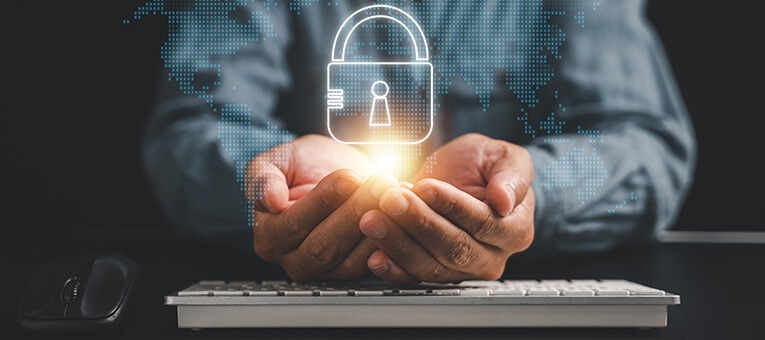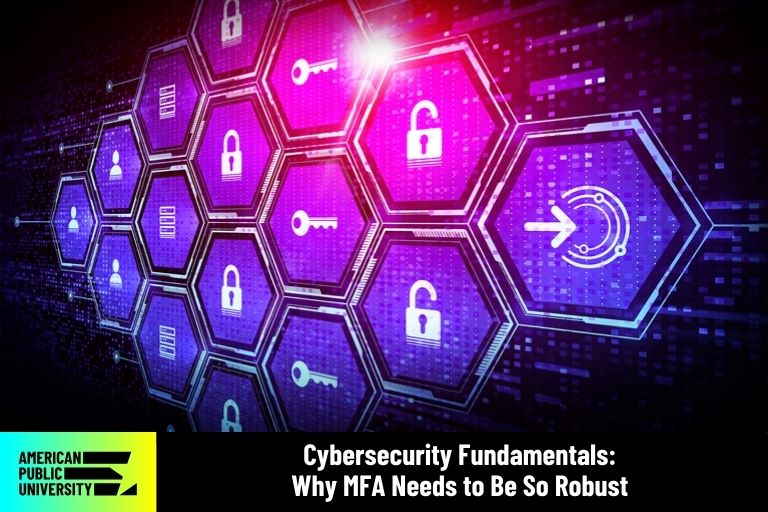
Understanding Cybersecurity Essentials
Definition of Cybersecurity
Cybersecurity refers to the practices, technologies, and measures designed to protect computer systems, networks, and data from unauthorized access, damage, or theft. It encompasses everything from securing personal devices to safeguarding corporate networks.
Why Cybersecurity Matters
Cybersecurity is vital in today’s digital landscape. With increasing reliance on technology, the stakes are higher than ever. Consider these key reasons why it matters:
- Protection of Sensitive Information: Organizations handle enormous amounts of sensitive data, including personal identities and financial details.
- Incidence of Cyberattacks: Cybercriminals are evolving, leading to an uptick in hacking attempts, which highlights the necessity for robust cybersecurity measures.
- Financial Impact: Data breaches can cost companies millions in damages and lost revenue, not to mention the reputational damage.
Imagine a world where your personal information can be swiped in an instant. That’s why being aware and proactive about cybersecurity isn’t just smart—it’s essential!

Common Cyber Threats
Phishing Attacks
Phishing attacks have become a prevalent method for cybercriminals to trick individuals into revealing sensitive information. Through deceptive emails that appear legitimate, attackers can easily lure victims.
- Recognizable Signs: Look for misspellings, urgent requests, or unfamiliar sender addresses.
- Impact: One click can compromise your entire organization.
Imagine receiving an email from your bank, urging you to change your password—pressing the link could lead to disaster!
Malware and Ransomware
Another major cyber threat is malware, which includes software designed to infiltrate computers without user consent. Ransomware, a type of malware, encrypts data and demands payment for decryption.
- Types of Malware: Trojan horses, spyware, and adware are just a few examples.
- Consequences: Businesses can face prolonged downtimes and financial losses.
In one personal instance, a friend’s small business was crippled by ransomware, forcing them to pay a hefty fee to regain access to critical information. This underscores the necessity of preventive measures to protect against such vulnerabilities!

Importance of Strong Passwords
Creating Secure Passwords
Creating secure passwords is one of the simplest yet most effective ways to protect your online accounts. A strong password can prevent unauthorized access and potential data breaches.
- Length and Complexity: Aim for at least 12 characters, mixing uppercase, lowercase, numbers, and symbols.
- Avoid Common Phrases: Using “123456” or “password” is like leaving your door wide open.
I once used a family pet’s name as a password—think of how many other people might do the same!
Multi-Factor Authentication
Adding an extra layer of security is highly recommended through Multi-Factor Authentication (MFA). This method requires users to provide two or more verification factors to access their accounts.
- Verifying Identity: This could be a text message code, an authentication app, or a fingerprint scan.
- Increased Security: Even if someone steals your password, they can’t access your account without that additional verification.
With MFA, you significantly reduce the risk of a security breach. In today’s digital world, combining strong passwords with MFA is like having both a strong lock and a vigilant guard!

Data Encryption Techniques
Symmetric Encryption
Symmetric encryption is a foundational approach where a single key is used for both encryption and decryption. It’s like having a master key for a locked diary—only those with the key can read the contents.
- Speed and Efficiency: This method is generally faster and suitable for encrypting large volumes of data.
- Key Management: The primary challenge lies in securely sharing the key, as anyone with access can decode the information.
In my experience, I’ve often seen organizations underestimating the importance of key security—just like leaving that diary key in plain sight!
Asymmetric Encryption
On the other hand, asymmetric encryption uses a pair of keys: a public key for encryption and a private key for decryption. Think of it as a lockbox where anyone can drop in a letter, but only you have the key to open it.
- Enhanced Security: This adds a layer of security since the private key never has to be shared.
- Applicability: It’s often used in secure communications, such as email or transactions, making it ideal for applications like SSL.
Understanding these encryption techniques is crucial in today’s digital age, as they form the backbone of secure communications, ensuring that sensitive information remains protected even in transit.

Network Security Measures
Firewall Protection
Firewall protection serves as the first line of defense in network security. Acting much like a security guard at the entrance to a building, firewalls monitor and control incoming and outgoing network traffic based on predetermined security rules.
- Types of Firewalls: Options include hardware firewalls, software firewalls, and cloud-based firewalls.
- Traffic Control: They block or allow specific traffic based on IP addresses, protocols, and more.
I remember setting up a firewall for a friend’s small business; it was eye-opening to see how many unauthorized attempts were immediately blocked!
Intrusion Detection Systems
Intrusion Detection Systems (IDS) go a step further by actively monitoring network traffic for suspicious activity or policy violations. Think of an IDS as a surveillance camera that alerts security personnel when it detects something amiss.
- Detection Methods: These systems can use signature-based detection (identifying known threats) or anomaly-based detection (spotting unusual behavior).
- Response Mechanism: While some IDSs only alert administrators, others can take action automatically to mitigate the threat.
By implementing both firewalls and IDS, organizations can significantly enhance their network security posture, ensuring that potential threats are swiftly identified and dealt with to minimize any impact.

Employee Training and Awareness
Cybersecurity Training Programs
Implementing comprehensive cybersecurity training programs is crucial for fostering a culture of security awareness among employees. After all, your workforce is often the first line of defense against cyber threats.
- Topics Covered: Common topics include recognizing phishing emails, safe browsing practices, and proper data handling.
- Interactive Elements: Incorporating hands-on activities or simulations can make the training more engaging and memorable.
A colleague shared how their company’s training completely transformed employee attitudes; incidents of social engineering attempts dropped significantly!
Reporting Security Incidents
Encouraging a clear and effective process for reporting security incidents is equally vital. Employees need to feel empowered to speak up when they suspect a threat.
- Clear Protocols: Establish straightforward steps for reporting, ensuring employees know who to contact and what information to provide.
- Non-Punitive Environment: Foster a culture where reporting is encouraged, and no employee feels penalized for raising concerns.
When employees understand the importance of timely reporting, organizations can respond more effectively, mitigating potential damages and enhancing overall cybersecurity posture. This proactive approach reinforces that everyone plays a part in keeping the organization safe!

Incident Response and Recovery
Developing Response Plans
Having a well-structured incident response plan is vital for effectively managing and mitigating the impact of a cybersecurity incident. This plan acts as a roadmap, guiding your team through the chaos of a breach.
- Key Components: Identify roles and responsibilities, establish communication protocols, and document specific actions to take during an incident.
- Regular Reviews: Update the plan regularly to adapt to evolving threats and ensure it remains relevant.
I’ve witnessed firsthand how a clear response plan can empower teams, making them act decisively rather than reactively in a crisis!
Data Backup and Recovery Procedures
Equally important are robust data backup and recovery procedures. The ability to restore lost or compromised information quickly can be a lifesaver during a cyber incident.
- Backup Frequency: Implement regular backups, with daily backups often being the gold standard.
- Testing and Verification: Regularly test your recovery process to ensure backups are functional and readily accessible when needed.
In a past role, conducting recovery drills highlighted gaps in our processes, allowing us to fine-tune our backup strategy and ensure data integrity. A proactive approach to these procedures not only minimizes downtime but also fortifies an organization’s resilience against future incidents!

Compliance and Regulations
GDPR and Data Protection
Navigating compliance and regulations, such as the General Data Protection Regulation (GDPR), is essential for any organization handling personal data. GDPR sets a high standard for data protection, mandating that businesses prioritize user privacy.
- Core Principles: Transparency, data minimization, and user consent are key tenets of GDPR.
- Penalties for Non-Compliance: Organizations can face hefty fines, reaching up to 4% of annual revenue.
I once worked with a company that overhauled its data management practices to comply with GDPR, ultimately building stronger trust with customers and improving data handling processes.
Industry-Specific Compliance
In addition to general data protection laws, many industries have specific compliance requirements. For instance, healthcare organizations must adhere to HIPAA, while financial institutions follow regulations like PCI DSS.
- Tailored Approaches: Each industry has unique challenges; therefore, compliance strategies must be customized.
- Importance of Regular Audits: Ongoing assessments help ensure that organizations meet both legal obligations and industry standards.
Understanding these compliance frameworks not only mitigates risks but also enhances credibility among clients and partners, providing a competitive edge in the market!

Emerging Trends in Cybersecurity
Artificial Intelligence in Security
The integration of artificial intelligence (AI) in cybersecurity is revolutionizing how organizations approach threat detection and prevention. AI algorithms can analyze vast amounts of data in real time, identifying unusual patterns and responding to threats faster than ever.
- Automated Threat Detection: AI helps in identifying and neutralizing threats before they escalate.
- Improved Decision Making: Machine learning models can evolve over time, enhancing their effectiveness against new threats.
I recall watching a demo where AI was able to detect a potential breach within seconds, a feat that previously would have taken human analysts much longer!
IoT Security Challenges
As the Internet of Things (IoT) continues to expand, it presents unique security challenges that require attention. With billions of connected devices, the potential entry points for cyberattacks increase dramatically.
- Vulnerable Devices: Many IoT devices lack robust security features, making them easy targets for hackers.
- Data Privacy Concerns: The sheer volume of data being transmitted poses risks if not adequately protected.
In my neighborhood, a recent incident involved hackers exploiting a smart camera system to gain access to a home network—a stark reminder of the importance of securing IoT devices. Addressing these emerging trends ensures organizations remain one step ahead in the ever-evolving landscape of cybersecurity!

Future of Cybersecurity
Predictions and Projections
As we look ahead, the future of cybersecurity will likely be shaped by a variety of trends and developments. Cyber threats are expected to grow in sophistication, with attackers leveraging more advanced tactics to breach defenses.
- Rise of AI-Powered Attacks: Just as AI is used for defense, cybercriminals may utilize it to enhance their attack strategies.
- Increased Regulation: As breaches become more frequent, stricter regulations surrounding data protection are anticipated.
I recently attended a seminar where experts emphasized the urgent need for organizations to adapt and evolve continually, as the landscape will only become more challenging!
Advancements in Defensive Technologies
In response to these evolving threats, advancements in defensive technologies will play a critical role in future cybersecurity strategies. Emerging solutions will likely focus on proactive threat hunting and automated incident responses.
- Next-Gen Firewalls: These will feature deeper packet inspection and machine learning capabilities.
- Decentralized Security Models: With the rise of remote work, there will be a shift towards more distributed security frameworks that protect users regardless of location.
It’s exciting to think about how these innovations will equip organizations to stay ahead of cyber threats, ensuring a secure digital environment for all. The path forward is dynamic, but with the right foresight and technology, it’s a journey worth undertaking!

